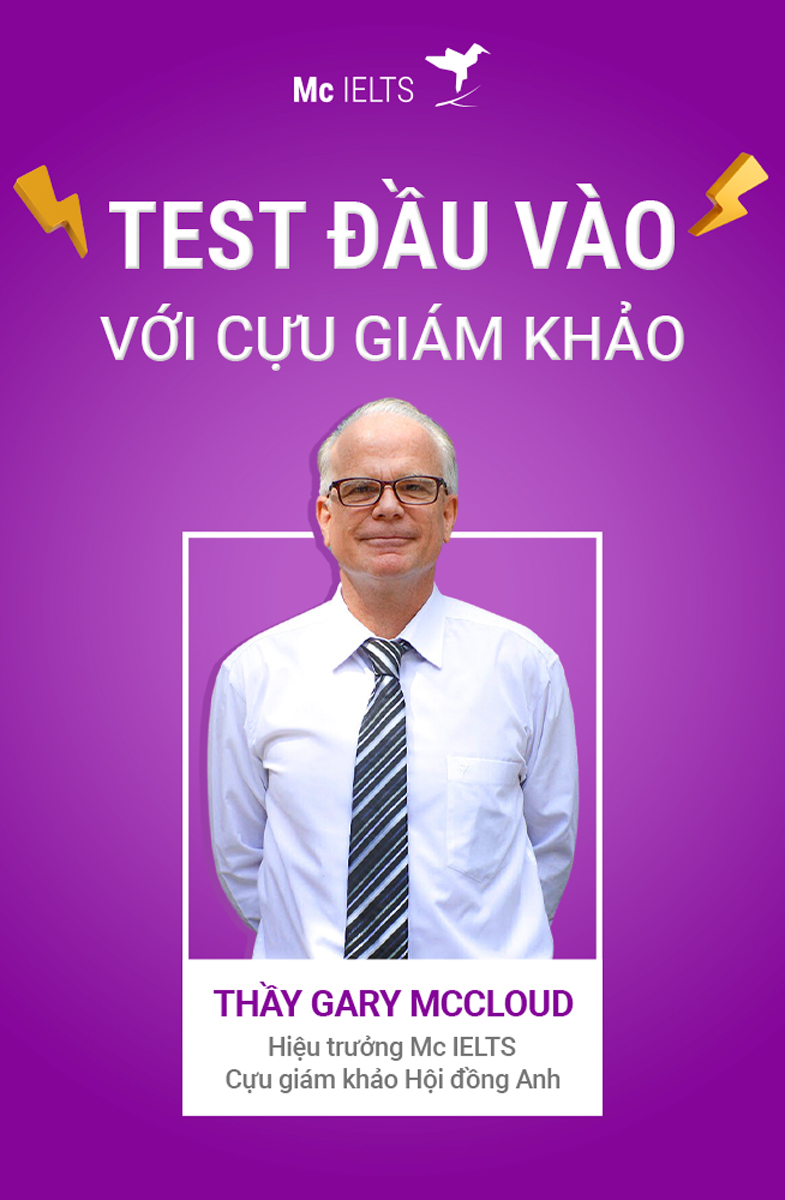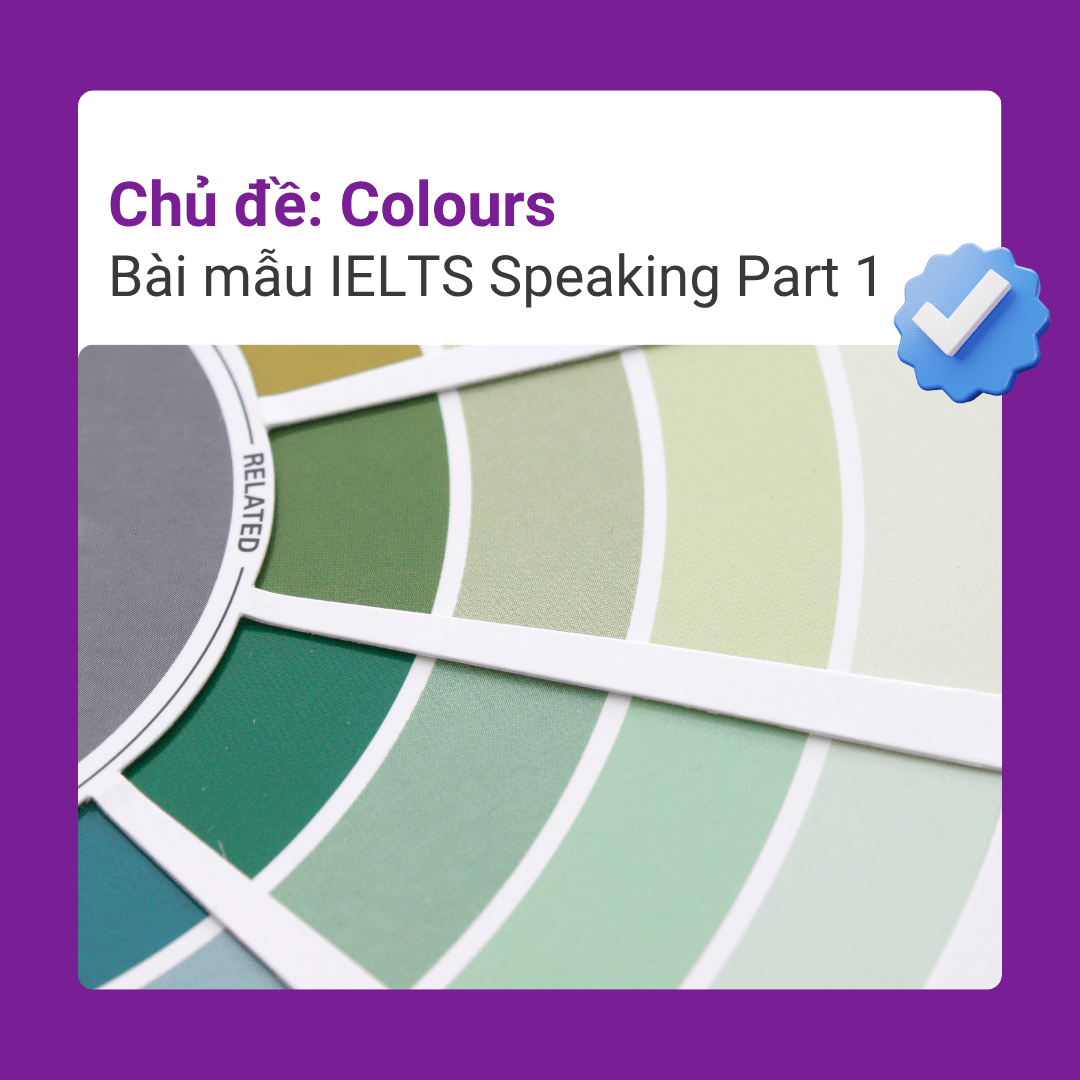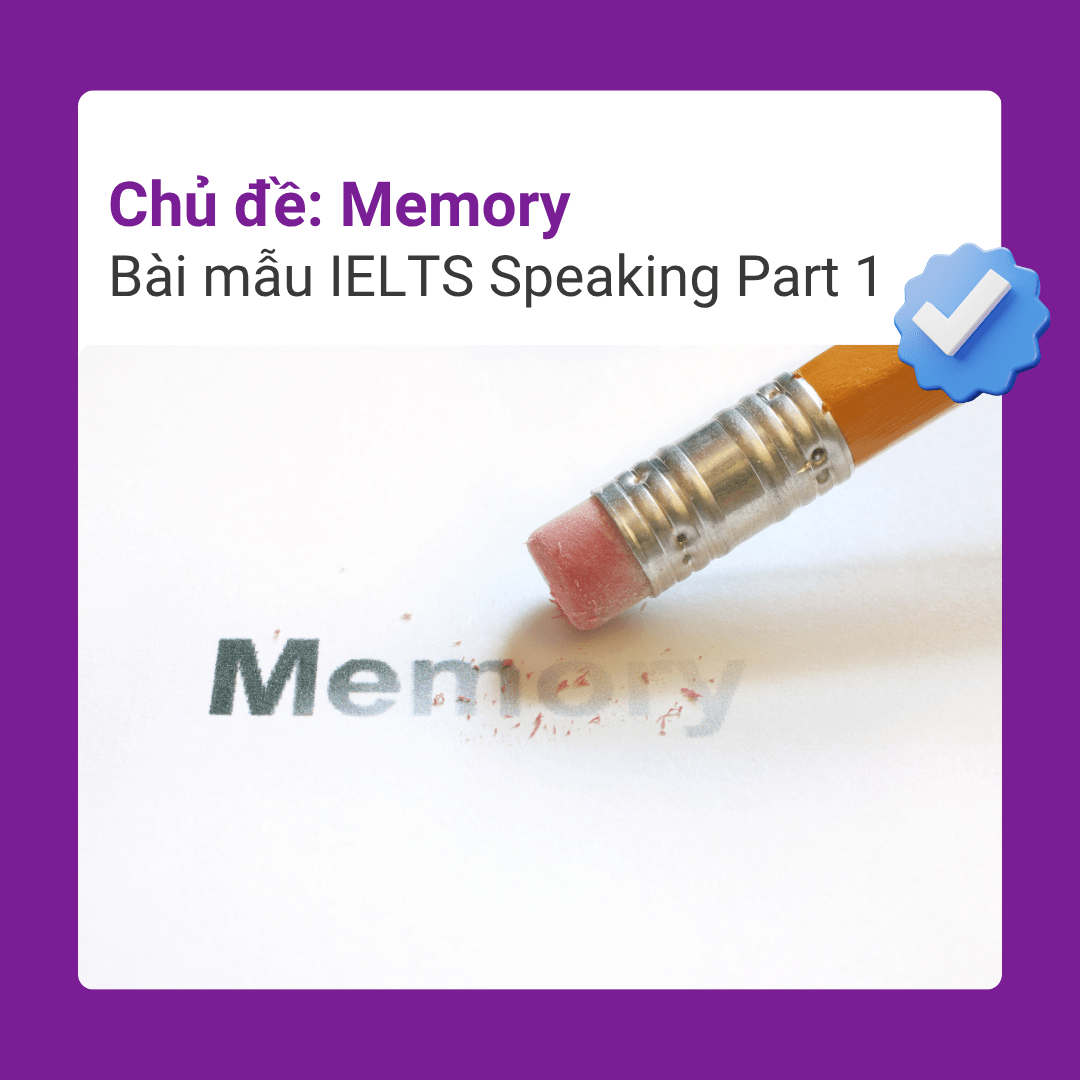IELTS Speaking Part 2 & 3: A Beautiful City
 15/02/2025
15/02/2025
 Tác giả : Phong Tran
Tác giả : Phong Tran
Khi bạn được yêu cầu “Describe a beautiful city” trong IELTS Speaking Part 2 và 3, bạn sẽ bắt đầu từ đâu? Thành phố đẹp có thể được miêu tả theo nhiều cách khác nhau: từ cảnh sắc thiên nhiên, kiến trúc, đến văn hóa địa phương. Mc IELTS sẽ mang đến cho bạn hai bài mẫu với những cách tiếp cận khác nhau, giúp bạn làm nổi bật sự đặc biệt của thành phố mà bạn chọn. Bài viết còn có audio luyện nghe và giải thích từ vựng để bạn thực hành và cải thiện kỹ năng nói.

IELTS Speaking Part 2 & 3: A Beautiful City
Hướng dẫn trả lời IELTS Speaking Part 2 (Part 2 Answer Guide)
| A Beautiful City
You should say:
|
Answer 1
Today, I’d like to talk about Paris, a city that is undoubtedly beautiful and holds a special place in many people’s hearts, including mine. I first learned about Paris in my school days through books and movies, and it always seemed like a dream destination. Its reputation as a city of romance and history always intrigued me.
Paris, situated in the heart of France, is home to iconic structures such as the Eiffel Tower, the Notre-Dame Cathedral, and the Louvre Museum. These architectural marvels are not just buildings but symbols of artistic and historical significance. The city is also famous for its exquisite cuisine, fashion, and art.
The beauty of Paris lies in its elegant streets, charming cafés, and the Seine River that flows through the city. It’s the way the city lights up at night and how art and culture are woven into the fabric of everyday life. Every corner of Paris seems to tell a story, making it a living museum of beauty and elegance.
Paris’s allure isn’t just in its physical beauty but in its atmosphere. It’s a city that inspires creativity and love, and visiting it was an experience that stayed with me. It’s a blend of history, art, and life that makes Paris not just a place to visit, but a place to experience and cherish.
Giải nghĩa từ vựng:
Intrigued (Verb)
Định nghĩa: Làm thích thú, kích thích sự tò mò.
Example: The mystery novel really intrigued me.
Iconic (Adjective)
Định nghĩa: Biểu tượng, nổi tiếng và được nhiều người biết đến.
Example: The Eiffel Tower is an iconic landmark of Paris.
Architectural (Adjective)
Định nghĩa: Liên quan đến kiến trúc.
Example: The city is known for its unique architectural style.
Exquisite (Adjective)
Định nghĩa: Tinh tế, tinh xảo, đẹp đẽ.
Example: The craftsmanship of the jewelry was exquisite.
Elegance (Noun)
Định nghĩa: Sự thanh lịch, tao nhã.
Example: Her dress had a simple yet undeniable elegance.
Allure (Noun)
Định nghĩa: Sự quyến rũ, hấp dẫn.
Example: The allure of the city is undeniable.
Creativity (Noun)
Định nghĩa: Khả năng tạo ra ý tưởng mới và sáng tạo.
Example: The workshop was designed to boost creativity.
Cherish (Verb)
Định nghĩa: Trân trọng, giữ gìn.
Example: We cherish the memories of our travels together.
Answer 2
During my master’s program, I was assigned a particularly difficult task: completing a comprehensive research thesis within a specific field of study. The topic was complex, focusing on the impact of social media on consumer behavior. The challenge lay not only in the depth of research required but also in analyzing vast amounts of data and presenting it in a coherent manner.
I tackled this task by breaking it down into manageable sections. I spent countless hours in the library, poring over books and academic journals, and conducted detailed surveys and interviews for primary data. Analyzing the data required learning new software, which was time-consuming but necessary.
The difficulty of this task was in synthesizing a large amount of information into a meaningful conclusion, while also mastering new research tools. The process was exhausting, and at times I felt overwhelmed.
However, when I finally completed the thesis and it was well-received by the review committee, I felt an immense sense of accomplishment. Not only had I contributed valuable insights to my field of study, but I had also developed new skills and a deeper understanding of research methodologies. This experience, though challenging, made me proud of my dedication and ability to overcome obstacles in academic pursuits.
Giải nghĩa từ vựng:
Comprehensive (Adjective)
- Định nghĩa: Bao hàm toàn diện, toàn bộ.
- Example: She wrote a comprehensive guide to gardening.
Coherent (Adjective)
- Định nghĩa: Mạch lạc, dễ hiểu.
- Example: His argument was clear and coherent.
Tackled (Verb)
- Định nghĩa: Giải quyết, xử lý (vấn đề, công việc).
- Example: We tackled the problem head-on.
Poring (Verb)
- Định nghĩa: Nghiên cứu kỹ lưỡng, chăm chú đọc.
- Example: She spent hours poring over the historical documents.
Synthesizing (Verb)
- Định nghĩa: Kết hợp thông tin từ nhiều nguồn để tạo ra cái mới.
- Example: The study involved synthesizing data from various studies.
Exhausting (Adjective)
- Định nghĩa: Làm kiệt sức, mệt mỏi.
- Example: Running the marathon was exhausting.
Overwhelmed (Adjective)
- Định nghĩa: Cảm thấy quá tải, không thể xử lý.
- Example: She felt overwhelmed with all the work she had to do.
Accomplishment (Noun)
- Định nghĩa: Thành tựu, điều đã đạt được.
- Example: Completing the project was a major accomplishment.
Hướng dẫn trả lời IELTS Speaking Part 3 (Part 3 Answer Guide)
What are the differences between modern towns and modern cities?
Answer 1: One significant difference between modern towns and cities lies in their size and population. Modern cities tend to be larger and more densely populated than towns, often serving as economic and cultural centers of a region or country. Cities also feature more extensive infrastructure, including advanced transportation systems, skyscrapers, and a wider range of amenities such as shopping malls, theaters, and museums. In contrast, modern towns are usually smaller in size, with a lower population density and a more relaxed pace of life. They may have fewer amenities and a less developed public transportation system.
Giải nghĩa từ vựng:
Densely populated (Adjective)
Định nghĩa: Có mật độ dân số cao, nhiều người sống trong một khu vực nhỏ.
Example: Cities are often densely populated due to their economic opportunities.
Infrastructure (Noun)
Định nghĩa: Các cơ sở hạ tầng và tiện ích xã hội như đường, cầu, điện, nước, và giao thông.
Example: Developing modern infrastructure is essential for urban growth.
Skyscrapers (Noun)
Định nghĩa: Các tòa nhà chọc trời, thường có nhiều tầng và cao hơn so với các tòa nhà khác.
Example: New York City is known for its iconic skyscrapers.
Amenity (Noun)
Định nghĩa: Những tiện nghi và dịch vụ có sẵn để làm cho cuộc sống dễ dàng và thoải mái.
Example: The apartment complex offers various amenities, including a gym and pool.
Answer 2: One distinction between modern towns and cities is their economic focus. Cities often host a wide range of industries, corporate headquarters, and job opportunities, making them hubs for economic activities. They attract a diverse workforce and offer a higher standard of living. In contrast, modern towns may rely on more traditional industries, agriculture, or smaller businesses, which can lead to a different economic landscape. Additionally, towns may have a closer-knit community and a stronger sense of local identity compared to the multicultural and cosmopolitan nature of cities.
Giải nghĩa từ vựng:
Corporate headquarter (Noun Phrase)
Định nghĩa: Trụ sở chính của một tập đoàn hoặc công ty lớn.
Example: The company’s corporate headquarters are located in the city center.
Standard of living (Noun Phrase)
Định nghĩa: Mức độ thoải mái và tiện nghi trong cuộc sống của một cá nhân hoặc nhóm người.
Example: Improved infrastructure can raise the standard of living in a city.
Cosmopolitan (Adjective)
Định nghĩa: Liên quan hoặc liên kết với nhiều quốc gia và văn hóa trên thế giới.
Example: New York is known for its cosmopolitan atmosphere.
Local identity (Noun Phrase)
Định nghĩa: Nhận thức và tình cảm đối với văn hóa, truyền thống, và cộng đồng địa phương.
Example: Preserving local identity is important for small towns.
Why do some people like to visit historical sites?
Answer 1: Many people are drawn to visit historical sites because they offer a glimpse into the past and allow individuals to connect with history firsthand. These sites often hold cultural, architectural, or archaeological significance, making them intriguing destinations. People visit historical sites to learn about the events, individuals, and civilizations that shaped the world. They appreciate the opportunity to witness the artistry and craftsmanship of past eras, whether it’s admiring ancient architecture, viewing historical artifacts, or exploring well-preserved ruins.
Giải nghĩa từ vựng:
Glimpse (Noun)
Định nghĩa: Một cái nhìn ngắn và thoáng qua về cái gì đó.
Example: The exhibition offered a glimpse into the artist’s creative process.
Archaeological (Adjective)
Định nghĩa: Liên quan đến khoa khảo cổ học, việc nghiên cứu và khám phá di sản lịch sử qua các khảo cổ.
Example: The archaeological dig unearthed ancient pottery.
Artistry (Noun)
Định nghĩa: Sự tài hoặc kỹ năng trong việc tạo ra các tác phẩm nghệ thuật.
Example: The artistry of the Renaissance painters is celebrated worldwide.
Ruin (Noun)
Định nghĩa: Các phần còn lại của một cấu trúc hoặc ngôi làng cổ đại.
Example: The ruins of the ancient castle attract tourists.
Answer 2: Historical sites offer a sense of nostalgia and connection to one’s cultural heritage. Visitors may have a personal or ancestral connection to the site, and exploring it can be a way to honor their roots and gain a deeper understanding of their heritage. Additionally, historical sites often provide a tranquil and serene environment, offering a break from the fast-paced modern world. Many people find solace and inspiration in these locations, allowing them to reflect on the passage of time and the resilience of human civilization.
Giải nghĩa từ vựng:
Nostalgia (Noun)
Định nghĩa: Sự hoài niệm hoặc sự nhớ lại với sự yêu thích và mong muốn về quá khứ.
Example: The old photographs brought a sense of nostalgia.
Cultural heritage (Noun Phrase)
Định nghĩa: Di sản văn hóa, bao gồm các giá trị, truyền thống, và tài liệu của một cộng đồng.
Example: Preserving cultural heritage is important for future generations.
Tranquil (Adjective)
Định nghĩa: Yên bình và thanh thản, không có sự náo động hoặc ồn ào.
Example: The park offers a tranquil escape from the city.
Resilience (Noun)
Định nghĩa: Sự đàn hồi hoặc khả năng phục hồi sau khó khăn hoặc sự cố.
Example: The city’s resilience was evident in its post-disaster recovery.
How can people preserve historic cities and historic buildings?
Answer 1: Preserving historic cities and buildings requires a multi-faceted approach. First, it’s crucial to enact and enforce strict preservation laws and regulations that prevent demolition or unauthorized changes to historical structures. These laws should also provide incentives for property owners to maintain and restore historic buildings. Additionally, public awareness and education campaigns can help people understand the value of preserving their cultural heritage. Likewise, engaging local communities in preservation efforts is essential. This can include organizing volunteer groups for maintenance, setting up local heritage committees, and involving residents in decision-making processes. When local communities take pride in their historic heritage, they become active participants in its preservation.
Giải nghĩa từ vựng:
Enact (Verb)
Định nghĩa: Ban hành và thi hành luật hoặc quy định.
Example: The government should enact laws to protect historic sites.
Demolition (Noun)
Định nghĩa: Sự phá hủy hoặc phá dỡ một công trình hoặc tòa nhà.
Example: The demolition of the old factory led to the construction of a new shopping mall.
Incentive (Noun)
Định nghĩa: Những động cơ hoặc lợi ích được cung cấp để kích thích hành động cụ thể.
Example: Tax incentives can encourage homeowners to make energy-efficient upgrades.
Heritage committees (Noun Phrase)
Định nghĩa: Các nhóm hoặc tổ chức chịu trách nhiệm về việc bảo tồn di sản văn hóa.
Example: Heritage committees play a crucial role in safeguarding historic sites.
Answer 2: One effective way to preserve historic cities and buildings is, firstly, through government and private funding for restoration projects. This funding is critical in maintaining the structural integrity and aesthetic appeal of these sites. Additionally, incorporating modern technology, like 3D scanning, aids in accurately restoring and preserving historical details. Furthermore, promoting tourism centered around historical sites can generate revenue, which can then be reinvested in preservation efforts. This not only helps maintain the sites but also raises public interest in historical heritage. Lastly, engaging with international preservation organizations offers access to expertise, funding, and global support networks.
Giải nghĩa từ vựng:
Restoration (Noun)
Định nghĩa: Quá trình sửa chữa hoặc phục hồi để trả lại hình dạng hoặc tình trạng ban đầu.
Example: The restoration of the old theater was a massive success.
Funding (Noun)
Định nghĩa: Tiền bạc được cung cấp, đặc biệt là bởi tổ chức hoặc chính phủ, cho một mục đích cụ thể.
Example: The museum received significant funding for its renovation project.
Structural integrity (Noun Phrase)
Định nghĩa: Tính toàn vẹn và sự ổn định của cấu trúc kiến trúc.
Example: Engineers assessed the structural integrity of the historic bridge.
Aesthetic (Adjective)
Định nghĩa: Liên quan đến vẻ đẹp hoặc hình thức nghệ thuật.
Example: The aesthetic appeal of historical buildings is a key factor in their preservation.
International preservation organization (Noun Phrase)
Định nghĩa: Tổ chức toàn cầu chuyên về việc bảo tồn di sản văn hóa và lịch sử.
Example: Collaborating with international preservation organizations can bring new insights and resources.
Is it the government’s responsibility to preserve historic cities and historic buildings?
Answer 1: Certainly, the government has a pivotal role in the preservation of historic cities and buildings. These sites represent a nation’s cultural heritage and encapsulate historical significance. The government’s involvement is essential not only in protecting these structures but in preserving the narratives and history they embody. Additionally, such sites are often key tourist attractions, which can significantly boost the economy. Hence, the government’s role transcends cultural responsibility and aligns with economic benefits as well.
Giải nghĩa từ vựng:
Pivotal (Adjective)
Định nghĩa: Cực kỳ quan trọng và có ảnh hưởng lớn.
Example: The president played a pivotal role in the peace negotiations.
Narrative (Noun)
Định nghĩa: Câu chuyện hoặc mô tả một loạt sự kiện.
Example: The film interweaves multiple narratives.
Transcend (Verb)
Định nghĩa: Vượt qua hoặc hơn hẳn các giới hạn thông thường.
Example: Her latest book transcends genre boundaries.
Align (Verb)
Định nghĩa: Sắp xếp hoặc điều chỉnh (cái gì đó) vào một vị trí thích hợp hoặc cụ thể.
Example: The company’s goals align well with our own.
Answer 2: I’d argue that the government’s responsibility towards preserving historic cities and buildings is shared with the public. While the government should spearhead conservation efforts and provide necessary regulations, public awareness and participation are equally crucial. Communities play a key role in valuing and maintaining their historical heritage. Moreover, public-private partnerships can be an effective way to manage and fund these preservation projects, blending governmental support with private sector efficiency and innovation.
Giải nghĩa từ vựng:
Spearhead (Verb)
Định nghĩa: Dẫn đầu hoặc bắt đầu một hoạt động.
Example: She spearheaded the campaign to reduce plastic waste.
Conservation (Noun)
Định nghĩa: Sự bảo tồn hoặc bảo vệ môi trường, động vật hoang dã, và tài nguyên tự nhiên.
Example: The conservation of rainforests is vital for maintaining biodiversity.
Participation (Noun)
Định nghĩa: Sự tham gia vào một hoạt động hoặc sự kiện.
Example: The festival encourages active participation from the community.
Efficiency (Noun)
Định nghĩa: Khả năng làm việc hoặc sản xuất kết quả mà không lãng phí thời gian, tiền bạc, hoặc năng lượng.
Example: The new system was designed for greater efficiency.
Does historic preservation contradict economic development?
Answer 1:
Preserving historic sites can indeed complement economic development, contrary to the belief that it hinders progress. These sites often become prime tourist attractions, boosting local economies through tourism. The renovation and upkeep of historic buildings can also create job opportunities in sectors like construction, tourism, and conservation. Thus, historic preservation can be an engine for economic growth, fostering a sustainable blend of culture and commerce. Not to mention, the presence of well-preserved historic sites can enhance the cultural identity and attractiveness of a city, making it more desirable for businesses and residents. This cultural richness often leads to a higher quality of life and can be a key factor in attracting skilled professionals and investors.
Giải nghĩa từ vựng:
Complement (Verb)
Định nghĩa: Làm tăng thêm cho cái gì đó một cách hài hòa.
Example: The two musicians’ styles perfectly complement each other.
Renovation (Noun)
Định nghĩa: Sự sửa chữa và cải thiện, đặc biệt là một tòa nhà.
Example: The old theater underwent extensive renovation.
Upkeep (Noun)
Định nghĩa: Sự bảo dưỡng hoặc bảo trì cần thiết để giữ một cái gì đó trong tình trạng tốt.
Example: The upkeep of the park is funded by the local council.
Engine (Noun)
Định nghĩa: Cái gì đó là nguồn chính sản xuất hoặc tạo ra cái gì đó.
Example: Innovation is the engine of economic growth.
Answer 2: In some contexts, historic preservation can pose challenges to economic development, especially when it imposes restrictions on new construction and modernization. Stringent preservation laws might impede the development of new infrastructure, which is crucial for economic expansion. Balancing the need to protect historical heritage with the demands of a growing economy requires careful planning and innovative solutions. This dichotomy often necessitates a compromise to accommodate both preservation and progress. Moreover, integrating historic preservation into urban development plans can lead to a unique urban character, potentially making cities more attractive for investment and tourism, thus benefiting the economy in the long run.
Giải nghĩa từ vựng:
Stringent (Adjective)
Định nghĩa: (Quy định, yêu cầu) nghiêm ngặt, chặt chẽ.
Example: The company faces stringent environmental regulations.
Impede (Verb)
Định nghĩa: Chậm trễ hoặc ngăn chặn sự tiến triển hoặc thành công của cái gì đó.
Example: Lack of resources can impede the project’s progress.
Dichotomy (Noun)
Định nghĩa: Sự chia làm hai phần hoàn toàn khác nhau.
Example: The dichotomy between theory and practice is often challenging.
Compromise (Noun)
Định nghĩa: Sự thỏa hiệp hoặc giải pháp mà trong đó cả hai bên nhượng bộ một phần.
Example: The two sides reached a compromise after lengthy negotiations.
Long run (Noun Phrase)
Định nghĩa: Khoảng thời gian dài, tương lai xa.
Example: Decisions made today will affect the city in the long run.
What do you think will happen to historic places or buildings in the future? Why?
Answer 1: In the future, I foresee an increased emphasis on the conservation of historic places and buildings. As societies evolve, there’s a growing recognition of the importance of preserving cultural heritage. This could lead to more substantial governmental and private sector investment in preservation efforts. Advances in technology might also provide innovative ways to maintain these sites while respecting their historical integrity. Therefore, I’m optimistic about the future of historic preservation. The growing interest in sustainable development and responsible tourism might also encourage more effective preservation strategies, ensuring that historic places are not only preserved for posterity but also utilized in a way that contributes to the community’s vitality and diversity.
Giải nghĩa từ vựng:
Emphasis (Noun)
Định nghĩa: Sự nhấn mạnh hoặc đặc biệt quan tâm đến cái gì đó.
Example: The new health program puts an emphasis on preventive care.
Conservation (Noun)
Định nghĩa: Sự bảo tồn hoặc bảo vệ môi trường, động vật hoang dã, và tài nguyên tự nhiên.
Example: Conservation efforts have helped to protect endangered species.
Integrity (Noun)
Định nghĩa: Tính nguyên vẹn, hoàn chỉnh hoặc không bị tổn hại.
Example: The restoration work was done with respect to the building’s integrity.
Optimistic (Adjective)
Định nghĩa: Hy vọng và tin vào kết quả tốt đẹp.
Example: Despite the challenges, she remained optimistic about the future.
Responsible tourism (Noun Phrase)
Định nghĩa: Du lịch được thực hiện theo cách tôn trọng môi trường và di sản văn hóa.
Example: Responsible tourism emphasizes the protection and preservation of historical sites.
Answer 2: There’s a risk that some historic places and buildings may face neglect or demolition due to various reasons, such as urban development pressures or insufficient funding. Consequently, this might lead to the loss of significant cultural heritage if not properly addressed. Therefore, the future of these sites largely depends on the implementation of effective policies and, crucially, the people’s willingness to appreciate and support their maintenance. Indeed, it’s a challenging situation that requires an immediate and effective solution. To address this, proactive efforts are needed. It is essential to integrate historic preservation into broader city planning initiatives, ensuring that these sites are not overlooked but instead are valued as essential elements of urban development and cultural expression.
Giải nghĩa từ vựng:
Neglect (Verb)
Định nghĩa: Không chú ý đến, không chăm sóc hoặc không thực hiện nghĩa vụ đúng cách.
Example: The building has been neglected for years and is now in poor condition.
Proactive (Adjective)
Định nghĩa: Kiểm soát tình hình bằng cách làm điều gì đó trước để ngăn chặn vấn đề xảy ra.
Example: The company took a proactive approach to customer service.
Implementation (Noun)
Định nghĩa: Sự thực hiện hoặc bắt đầu sử dụng một kế hoạch hoặc hệ thống.
Example: The implementation of the new software system was a success.
City planning initiative (Noun Phrase)
Định nghĩa: Sáng kiến và kế hoạch liên quan đến phát triển và quản lý đô thị.
Example: Historic preservation should be included in city planning initiatives.
Tự tin chinh phục chủ đề “A Beautiful City”

Học IELTS cùng Cựu giám khảo www.mcielts.com
Khi đăng ký học IELTS ở trung tâm Mc IELTS, bạn sẽ được hưởng những quyền lợi tuyệt vời:
- Tặng thêm 6 buổi học 1-1 hàng tuần với cố vấn học tập: Để bạn có thể giải đáp mọi thắc mắc và tăng cường luyện tập cá nhân.
- Học lại MIỄN PHÍ nếu không đạt điểm lên lớp: Bạn không cần lo lắng về chi phí khi phải học lại.
- Tham gia nhóm trao đổi Online trên Facebook: Với sự tham gia của cựu giám khảo IELTS, bạn sẽ nhận được những lời khuyên quý báu và phản hồi chi tiết.
- Kho tài liệu IELTS Online phong phú: Hơn 50 đầu sách đa dạng và bổ ích giúp bạn tự học hiệu quả.
- Hỗ trợ học bù và bảo lưu trong quá trình học: Đảm bảo bạn không bỏ lỡ bất kỳ bài học quan trọng nào.
Chất lượng giảng dạy tại Mc IELTS đã được khẳng định qua hơn 1000 đánh giá xuất sắc từ học viên:
- Đánh giá 4.9/5.0 trên Facebook, xem chi tiết tại đây.
- Đánh giá 4.9/5.0 trên Google, xem chi tiết tại đây.
- Đánh giá 9.2/10 trên Edu2review, xem chi tiết tại đây.

Những con số biết nói
Đặc biệt, Mc IELTS còn cung cấp dịch vụ sửa bài miễn phí Writing và Speaking trong nhóm Facebook với sự tham gia của cựu giám khảo IELTS. Đây là cơ hội tuyệt vời để bạn nhận được những phản hồi chi tiết và cải thiện kỹ năng của mình một cách hiệu quả. Tham gia nhóm tại đây.

Tham gia nhóm Facebook của Mc IELTS để được cựu giám khảo chấm chữa bài Speaking và Writing hoàn toàn miễn phí
Qua những câu trả lời mẫu và từ vựng chi tiết trong bài viết này, Mc IELTS hy vọng rằng bạn đã có thêm kiến thức và sự tự tin để đối mặt với chủ đề A Beautiful City trong phần thi IELTS Speaking Part 2&3.
Để đạt kết quả tốt nhất trong phần thi Speaking, hãy tham gia các khóa học tại Mc IELTS. Với đội ngũ giảng viên là những cựu giám khảo chấm thi IELTS, Mc IELTS sẽ giúp bạn nâng cao kỹ năng và tự tin chinh phục kỳ thi IELTS. ĐĂNG KÝ NGAY hôm nay để nhận được sự hỗ trợ tốt nhất và chuẩn bị vững chắc cho kỳ thi của bạn.
Nhận lộ trình IELTS TỐI ƯU theo yêu cầu
















